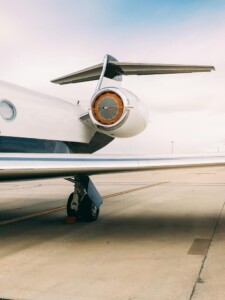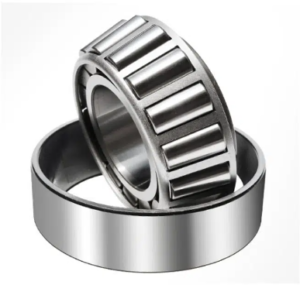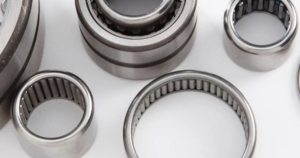When a plane lands all that speed, weight, and impact slams down on one system: the landing gear. And deep inside that landing gear?Aspectos. The small components doing a massive job.
Let’s be real. Aircraft bearings aren’t your everyday hardware store variety. They’re built to handle the kind of punishment few other parts ever see.
So which bearings are actually used in landing gear systems? Let’s dig in.
Think about it. Planes don’t ease into the runway—they drop, hit hard, and roll fast. The bearings inside the landing gear need to:
Handle extreme impact and shock loads
Withstand sudden temperature shifts
Stay reliable under pressure
This isn’t just about keeping wheels turning. It’s about safety, precision, and performance, all packed into a few ounces of metal.

1. Tapered Roller Bearings
These are the heavy lifters. Tapered roller bearings can take on huge radial loads and axial loads at the same time. Perfect for when a plane touches down at 150+ mph.
Used for: Main wheel assemblies, especially where both side loads and vertical impact forces are involved.
Why: Their angled design helps distribute shock evenly and maintain stability during landing and taxiing.

2.Spherical Plain Bearings
These bearings allow rotation plus a bit of tilting, which helps with alignment under load. In landing gear systems, things don’t always move in straight lines.
There’s flex, shift, and twist. Spherical bearings absorb all of that without failing.
Used for: Pivot points, shock strut connections, actuator linkages.
Why: Their design handles misalignment and high loads, especially in rough landings or uneven runway surfaces.
3. Needle Bearings
Needle bearings are compact but strong. They’ve got a high load capacity relative to their size, which makes them useful when there’s limited space (something you’ll find all over an aircraft’s undercarriage.)
Used for: Small rotating joints and linkages within the landing gear mechanism.
Why: They save space without sacrificing strength.

4. Ball Bearings (High-Precision Types)
Not used as heavily as tapered or spherical bearings in load-bearing spots, ball bearings are still found in some retracting or steering systems where smoother rotation with minimal resistance is key.
Used for: Steering actuators, gear doors, motorized components.
Why: They’re perfect where precision and speed matter more than brute force.
In aviation the materials aren’t just picked for strength. They’re chosen for weight, corrosion resistance, and reliability at altitude.
Most aircraft bearings are made from:
Stainless steel or chrome steel – strong, corrosion-resistant
M50 tool steel – high temperature and fatigue resistance
Titanium (in advanced systems) – light and durable
PTFE liners – in self-lubricating spherical bearings which eliminate the need for greasing mid-air
Aircraft bearings have to deal with conditions that would destroy standard industrial bearings. Here’s what sets them apart:
Extreme load capacity
Built-in corrosion resistance
Certified for aviation use (AS9100, FAA standards, etc.)
Long life with minimal maintenance
Tight manufacturing tolerances/no room for error
Every landing is a test. Every takeoff? A second chance to prove they work.
Built to Take a Beating
Aircraft landing gear is some of the toughest, most precisely engineered equipment in the world. And the bearings inside it are no exception. Each one plays a massive role.
At NSAR Bearings we understand the importance of reliability and engineering excellence.
We supply high-quality bearings for demanding applications, including aerospace-grade solutions built to last.
Want bearings that can handle the real-world equivalent of a plane landing?
VisitRodamientos NSARtoday. We’ll get you what you need.
Copyright © Rodamientos NSAR. Reservados todos los derechos.política de privacidad